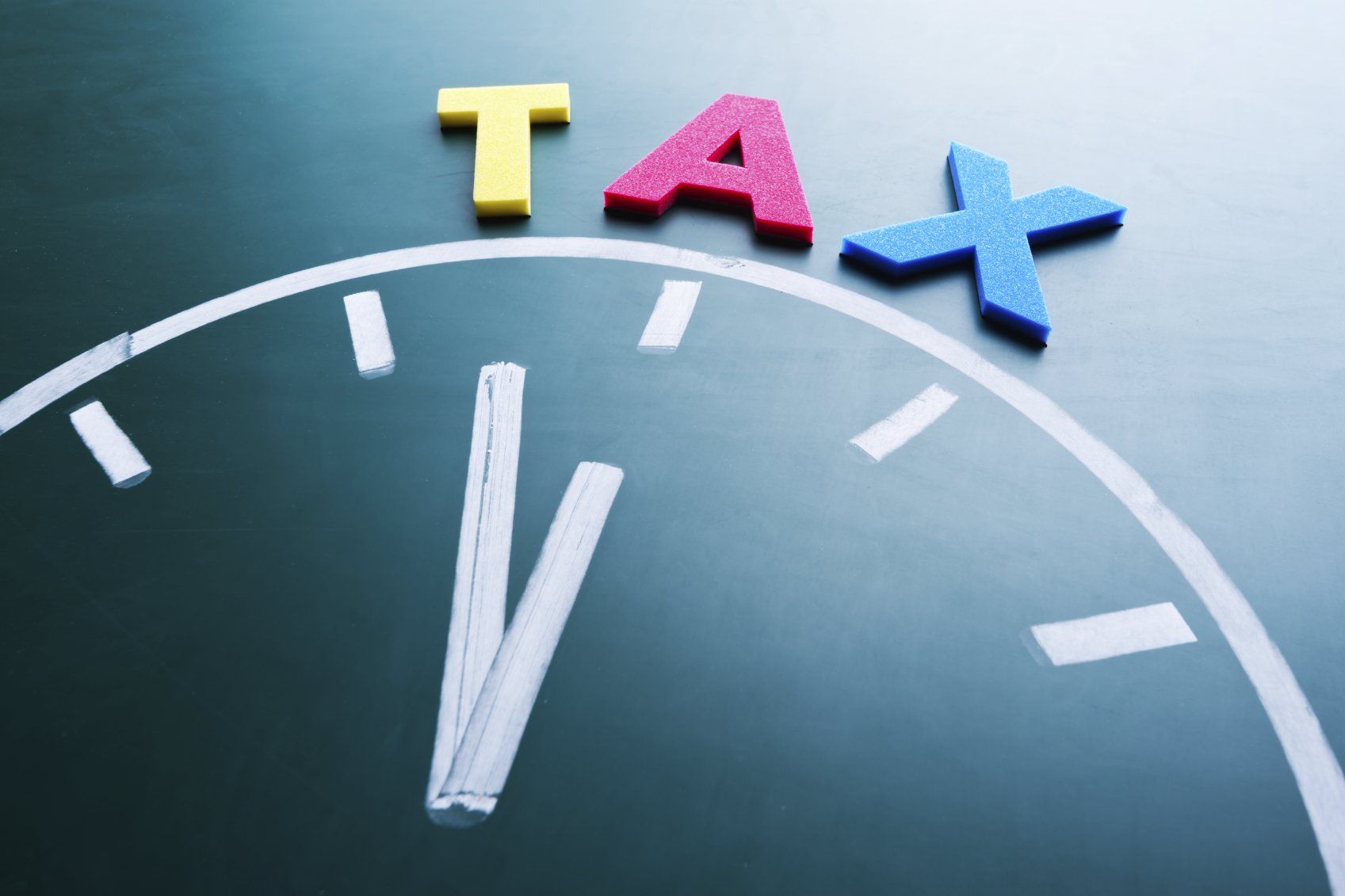9 ways you can pay less tax (but you need to act quickly)

Time is running out. If you want to take a few simple preventative measures to minimise or defer how much tax you will pay for this Financial Year, you need to do two things:
Read the following 9 point checklist, then
Call or email us as soon as possible so we can make a time to sit do with you to assess which of these preventative measures can be done for you in your circumstances.
Depending on your situation, this tax planning process could save you many thousands of dollars. That’s cash in your bank account, rather than the Tax Office’s.
After all, why pay one more dollar in tax than you have to?
I’m sure you have better uses for your money, such as investing in your future or just investing in the here and now and rewarding yourself with a little ‘lifestyle indulgence’.
Now ... to the checklist. Tick each item you think is relevant to you:
Review debtors Your income tax is payable on any invoices you’ve issued, even if you haven’t been paid. Don’t pay tax on any invoice you know won’t ever get paid. Review the list of those who owe you money and write off those ‘bad debts’ now.
Review your stock levels The value of your closing stock directly affects your business profit, the higher your stock value the higher your profit and tax. Review and identify any obsolete or old stock and scrap it or re-value it to its correct value. Individual items of stock can be valued at cost, market value, or replacement value.
Review your business assets Write off any obsolete asset and claim its remaining book value now. There are also new ways assets can be depreciated, called pooling, that will increase the depreciation expense. This isn’t suitable for all business, but it is worthwhile reviewing.
Defer income — A simple tip that can defer a lot of tax for you If your cashflow allows, you may consider deferring some of your invoices until July. If the income was not invoiced this financial year, it can’t be taxed this financial year. Before taking this option we recommend having a budget to manage these months income and expenses. We can help you with that.
Review your invoices issued If you have invoiced someone in advance for services you will provide in the next financial year, then you may not have earned that income in this tax year. That income may belong in the year you provide the service. Again, this is something we can work out with you when we meet for tax planning.
Pay the June quarter superannuation Superannuation if paid on time is deductible when paid. Since you have to pay the 9.5% superannuation by 28 July, bring it forward a month and pay it now and claim the deduction now. Why wait a whole year to reduce your tax?
Using all of your superannuation cap If maximising your superannuation is part of your retirement plan, then don’t forget to contribute as much as you can into your super fund. We can guide you as to how much you can contribute. It’s a missed opportunity not to do this each year.
Employee bonuses Bonuses to employees are deductible when the business has committed to paying them and it is not subject to any discretion. So finalise and sign off on the bonuses to be paid and reduce this year’s tax.
Capital Gains Tax (CGT) Minimising your capital gains tax is often about timing. Ensure the asset has been owned for at least 12 months. If you already have a capital gain, are there any investments making a loss you can sell? Do you qualify for any capital gain rollover relief concessions? (Again, we can guide you here.) CGT is a whole topic on its own, and the potential savings are so great, it is definitely an area in which you should seek our guidance.
If you ticked any of the above items, then we need to talk. And soon.
Call us now on 08 6336 6200 or email us on nparker@ascentwa.com.au to make a time to meet and discuss your tax planning options.
Need help with your accounting?

It’s very common for retirement priorities to shift over time. But for some, the change arrives with a jolt. You may spend years—even decades—planning exactly what your post-work life will look like. While life can throw a curveball into your plans at any stage, the closer you get to retirement, the more unsettling the disruption can be. Whether it’s family breakdowns, the death of a loved one, an inheritance received, or unexpected expenses, you'll face a different personal and financial landscape. One that no longer matches the retirement you envisioned. Adjusting your working life. When a major life change hits, the most important rule is: don't rush anything. While you're reshaping your future and contemplating big moves, avoid making any rash decisions that are irreversible. The event may alter the required length of your working life or your willingness to continue working: Health issues could force you to retire earlier than planned A substantial inheritance might enable a more enjoyable, earlier exit from work. Conversely, a divorce late in life, particularly for someone with high spending habits, might necessitate staying chained to a desk longer. The separation may leave you with an unexpected mortgage or simply drain your finances through the legal process, creating difficulties. Make a basic plan. Take the time to sit down and rationally think through what your new retirement might involve. If retirement is still five to 10 years away, that's a good timeframe to start contemplating your next steps. The most critical step is to determine how much money you will need to spend. While most people worry about whether they "have enough money," the key question is almost always, "How much do I need to spend in retirement?". Consider this example: If you retire with $1 million and your annual spending requirement is $50,000, you're likely secure. However, if you have $1 million but need to spend $150,000 per year, you have a problem. You'll need to either dramatically increase your savings or significantly reduce your spending expectations. If you are struggling with these figures or want a professional opinion, see a financial adviser ( we can direct you to one ). Paying for a few hours of their time will help you consider things you hadn't thought about. A change of pace. Remember, retiring from your main career does not mean leaving the workforce for good. You have options: Moving part-time in your current job for a few years, using your extra days for hobbies. Taking on volunteer work. Leaving a stressful executive role for paid work you actually enjoy. Hopefully, your surprises on the path to retirement are positive ones. If they are not, don't panic. Stay calm and seek advice. We can help. Early advice and planning can make a real difference in managing your retirement well—understanding the tax implications is a huge part of that. Don’t wait — let us help you !

If you're living and working in Australia on a visa, you may be required to lodge a tax return with the Australian Taxation Office (ATO). Australia's tax system is complex—even more so if you're a visa holder. We specialise in helping visa holders understand and manage tax obligations with clarity, compliance, and confidence. With years of experience in this niche area, our dedicated team of tax professionals is here to make tax time stress-free. Do visa holders need to lodge a tax return? If you earn income in Australia, you're likely required to lodge a tax return. This applies even if you're on a temporary or bridging visa. Common visa types that often require a tax return include: Working Holiday Visa (subclass 417 or 462) Student Visa (subclass 500) Temporary Skill Shortage Visa (subclass 482) Graduate Visa (subclass 485) Partner Visa (subclass 820/801 or 309/100) If you earn more than the tax-free threshold (currently $18,200), you must lodge a return. Some visa holders, however, don’t qualify for this threshold—more on that below. Australian Tax Residency Test explained. When it comes to lodging your tax return, your tax residency status makes a huge difference. Even if you're on a temporary visa, you could still be a resident for tax purposes. This affects how much tax you pay, what deductions you're eligible for, and whether you can claim the tax-free threshold. 1. The Resides Test (Main Test) This is the primary test. You’re likely a resident if: You live in one place and have regular routines (like renting a place, going to work or uni) You’re part of the local community (bank account, phone, gym, etc.) You stay in Australia for a continuous period of 6 months or more You intend to stay long term—even if your visa is temporary 2. The Domicile Test You may be a resident if your domicile (legal home) is in Australia, unless you can prove your permanent place of abode is overseas. This usually applies to: Australian citizens or PRs working overseas temporarily People who still maintain strong ties to Australia Note: Most temporary visa holders don’t pass this test unless they’ve been in Australia long-term. 3. The 183-Day Test. If you’re physically in Australia for 183 days or more in a financial year (doesn’t need to be consecutive), you may be a resident—unless your usual place of abode is clearly overseas and you don’t intend to live here. You’re likely a resident if: You stay for 6 months or more You rent long-term accommodation You’re working or studying with the intention to remain for an extended time Common visa types & how tax applies. 1. Student Visa (Subclass 500) Likely considered a tax resident if you stay over 6 months Can claim the tax-free threshold ($18,200) Can deduct eligible expenses (like textbooks, computers for study if working in a related field) 2. Working Holiday Visa (Subclass 417 or 462) Taxed at a flat rate of 15% on income up to $45,000 Must lodge a return if you earn any income Generally, not eligible for the tax-free threshold Superannuation can be claimed back when leaving Australia (through DASP) 3. Temporary Skill Shortage (TSS) Visa (Subclass 482) Often considered a tax resident, especially if you're working full time and have relocated Must lodge a return and may be eligible for tax offsets Can claim work-related deductions and rental expenses (if conditions apply) 4. Partner Visa (Subclass 820/801 or 309/100) Usually treated as a resident for tax purposes Same obligations and entitlements as an Australian citizen Tax returns may support future PR or citizenship applications Key differences for visa holders. 1. Tax Residency Status Your tax residency is not the same as your immigration residency. You could be a temporary visa holder and still be considered an Australian resident for tax purposes. If you're a resident for tax purposes, you may be eligible for the tax-free threshold and lower tax rates. If you're a non-resident, you’ll pay tax on every dollar earned (no tax-free threshold) and possibly at higher rates. Factors like how long you’ve been in Australia, your living arrangements, and whether you plan to stay long-term affect your tax residency status. The ATO provides a residency test to help determine your status. 2. Working Holiday Makers If you hold a working holiday visa, you're taxed at a special flat rate (15% on income up to $45,000 as of 2024-25), regardless of your residency status. You're still required to lodge a return if you’ve worked. 3. Access to Tax Offsets and Benefits Only Australian tax residents can access certain tax offsets, such as the low-income tax offset. You may also qualify for superannuation contributions, but you'll need to apply for a Departing Australia Superannuation Payment (DASP) when leaving the country permanently. What are the common mistakes to avoid? We see four common mistakes: Assuming you don’t need to lodge because you're a student or on a short-term visa Not declaring all income (including freelance or cash jobs) Using the wrong tax residency status Forgetting to lodge a return when leaving Australia Let us take care of your tax return. Whether you're a student, skilled worker, working holiday maker, or about to leave Australia permanently, getting your tax return right is crucial. This is a niche area Ascent Accountants specialises in. We understand the unique situations that come with different visas—and we make sure you claim every dollar you’re entitled to. Contact us today to get started.

Bringing clarity to concealed sales prices. Scrolling through property listings and seeing phrases like 'offers from', 'expressions of interest', 'all offers considered', or simply 'contact agent' instead of a clear price can be frustrating for buyers. This lack of transparency makes it difficult to figure out what a seller is truly expecting for a property. In fact, the frustration at properties advertised with no price at all is consistent feedback clients give to agents. Buyers often report frustration after calling agents and not being given any guidelines on where the property sits on a price scale. The absence of price information can impact user engagement, with industry feedback suggesting it can significantly influence how users interact with property websites. Clear, visible pricing may enhance user trust and interest. Strategic steps for buyers. How to overcome the problem when agents don't give a price guide. Navigating a property purchase without a price guide is challenging, but buyers can take strategic steps to reduce uncertainty and strengthen their buying position. Research comparable sales: Understanding market trends and researching comparable sales in the area is crucial for setting realistic expectations. While median values are widely referenced, they don't always accurately reflect individual property values, so look at recent sales of similar properties for a clearer picture. Know your financials: Have a clear understanding of your risk profile and financial position. Know your borrowing capacity and secure a loan pre-approval. This streamlines the buying process and makes your offer more appealing to sellers in a competitive market. Use online tools: Experimenting with the minimum-to-maximum price range feature online can assist in providing a general price range. The limitations of desktop valuations. While desktop valuations can be handy, be careful not to overstate their accuracy due to certain variables. Desktop valuations are just averages based on an area's lot size, house size, nearby sales, number of bedrooms, and bathrooms. They may not accurately account for homes that are unique, have views, or don't fit the suburb's prescribed pattern. Furthermore, distinct features are ignored. A significant difference between properties may be that one has been totally upgraded and renovated, with sellers spending hundreds of thousands, versus a property in original condition. This difference is often not taken into account by automated valuations. We’re here to help. Buying a home is a financial and an emotional decision. If you’re buying, do your homework on comparable sales and understand the tax implications with Ascent Accountants . You can also consult with Ascent Property Co. and be matched with a home that suits your needs.





